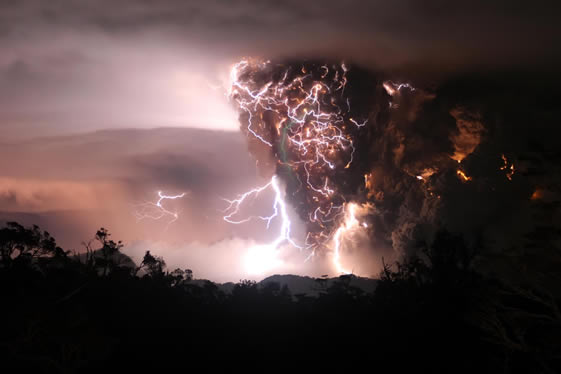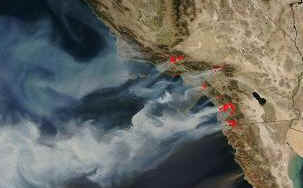Penmachine
14 January 2010
Quake risks
 Five years ago I wrote a long series of posts about the Indian Ocean earthquake and tsunami, compiling information from around the Web and using my training in marine biology and oceanography to help explain what happened. Nearly 230,000 people died in that event.
Five years ago I wrote a long series of posts about the Indian Ocean earthquake and tsunami, compiling information from around the Web and using my training in marine biology and oceanography to help explain what happened. Nearly 230,000 people died in that event.
Tuesday's magnitude-7 quake in Haiti looks to be a catastrophe of similar scale. I first learned of it through Twitter, which seems to be a key breaking-news technology now. Hearing that it was 7.0 on the Richter scale and was centred on land, only 25 kilometres from Port-au-Prince, I immediately thought, "Oh man, this is bad."
And it is. Some 50,000 are dead already, and more will die among the hundreds of thousands injured or missing. Haiti is, of course, one of the world's poorest countries, which makes things worse. Learning from aid efforts around the Indian Ocean in 2005 and from other disasters, the Canadian government is offering to match donations from Canadians for relief in Haiti.
This is a reminder that we live on a shifting, active planet, one with no opinions or cares about us creatures who cling like a film on its thin surface. We have learned, recently, to forecast weather, and to know where dangers from earthquakes, volcanoes, floods, storms, and other natural risks might lie. But we cannot predict them precisely, and some of the places people most like to live—flat river valleys, rich volcanic soils, fault-riddled landscapes, monsoon coastlines, tornado-prone plains, steep hillsides—are also dangerous.
Worse yet, the danger may not express itself over one or two or three human lifetimes. My city of Vancouver is in an earthquake zone, and also sits not far from at least a couple of substantial volcanoes. Yet it has been a city for less than 125 years. Quakes and eruptions happen in this region all the time—on a geological timescale. That still means that there has been no large earthquake or volcanic activity here since before Europeans arrived.
We would, I hope, do better than Port-au-Prince in a similar earthquake, but such chaos is not purely a problem of the developing world. The Earth, nature, and the Universe don't take any of our needs into account (no matter what foolishness people like Pat Robertson might say). We are at risk all over the world, and when the worst happens, we need to help each other.
Labels: americas, disaster, probability, science
30 June 2008
Rock from on high
One hundred years ago today, St. Petersburg, Russia, would have been annihilated by an enormous explosion—if the detonation had occurred less than five hours later than it actually did. But as it turned out, the event happened thousands of kilometres further east, smack dab in the middle of Siberia. St. Petersburg was lucky, saved by the rotation of the earth.
The fireball now known as the Tunguska Event was the mid-air explosion of an extraterrestrial object of some sort (link via PZ Myers), likely a meteorite or fragment of a comet—fairly big, perhaps 50 or 60 metres in diameter, like a condominium tower falling from the sky at several thousand kilometres per hour—which disintegrated violently in the atmosphere. The place is still a remote Siberian forest, several hundred kilometres northwest of Lake Baikal. Trees that fell then still lie on the ground a century later. The heat created microscopic glass beads in the soil. There would be no airburst of similar magnitude until the invention of the hydrogen bomb.
It took almost 20 years for a Soviet scientific expedition, led by Leonid Kulik, to visit the area and survey the still-extensive damage in 1927: while there was no obvious crater, trees had been stripped of their branches and bark, as well as flattened by the shock wave, in a region some 50 km wide. Had the Tunguska Event occurred in a populated area, tens or hundreds of thousands of people might have died.
It was nothing, of course, compared to other impact events on earth, such as those linked with mass extinctions in the more distant past. But I still wouldn't have wanted to be anywhere near it.
Incidentally, Tunguska shares its centenary not only with my 39th birthday today, but also with something else I'd probably prefer to steer clear of: the 45th birthday of Yngwie Malmsteen.
Labels: anniversary, astronomy, birthday, disaster, guitar, history
10 May 2008
Volcano and thunderstorm
Via Kottke, here is a gallery of UPI photos of a thunderstorm meeting the volcanic plume from the Chaitén volcano in Chile this week. Check out picture #11:
Whoa, as Keanu would say. I never knew the Spanish term for thunderstorm before, but it's pretty nifty: tormenta eléctrica.
Labels: americas, disaster, environment, news, photography, science
23 October 2007
The fires
 My parents are visiting San Diego for a few days. Their hosts live right by the seashore in La Jolla, and are in no danger from the massive fires to the east, but the sky is still raining ash, and the sun is reddened by the smoke, as my dad's photo shows.
My parents are visiting San Diego for a few days. Their hosts live right by the seashore in La Jolla, and are in no danger from the massive fires to the east, but the sky is still raining ash, and the sun is reddened by the smoke, as my dad's photo shows.
Hundreds of thousands of people (I thought I misread that, but no, 500,000 it is) have had to evacuate their homes. To see what's really going on from way high up, check out this satellite view:
Nasty. My parents return tomorrow, assuming flights out of San Diego Airport are running normally.
Labels: americas, disaster, family, fire, friends, sandiego, travel

